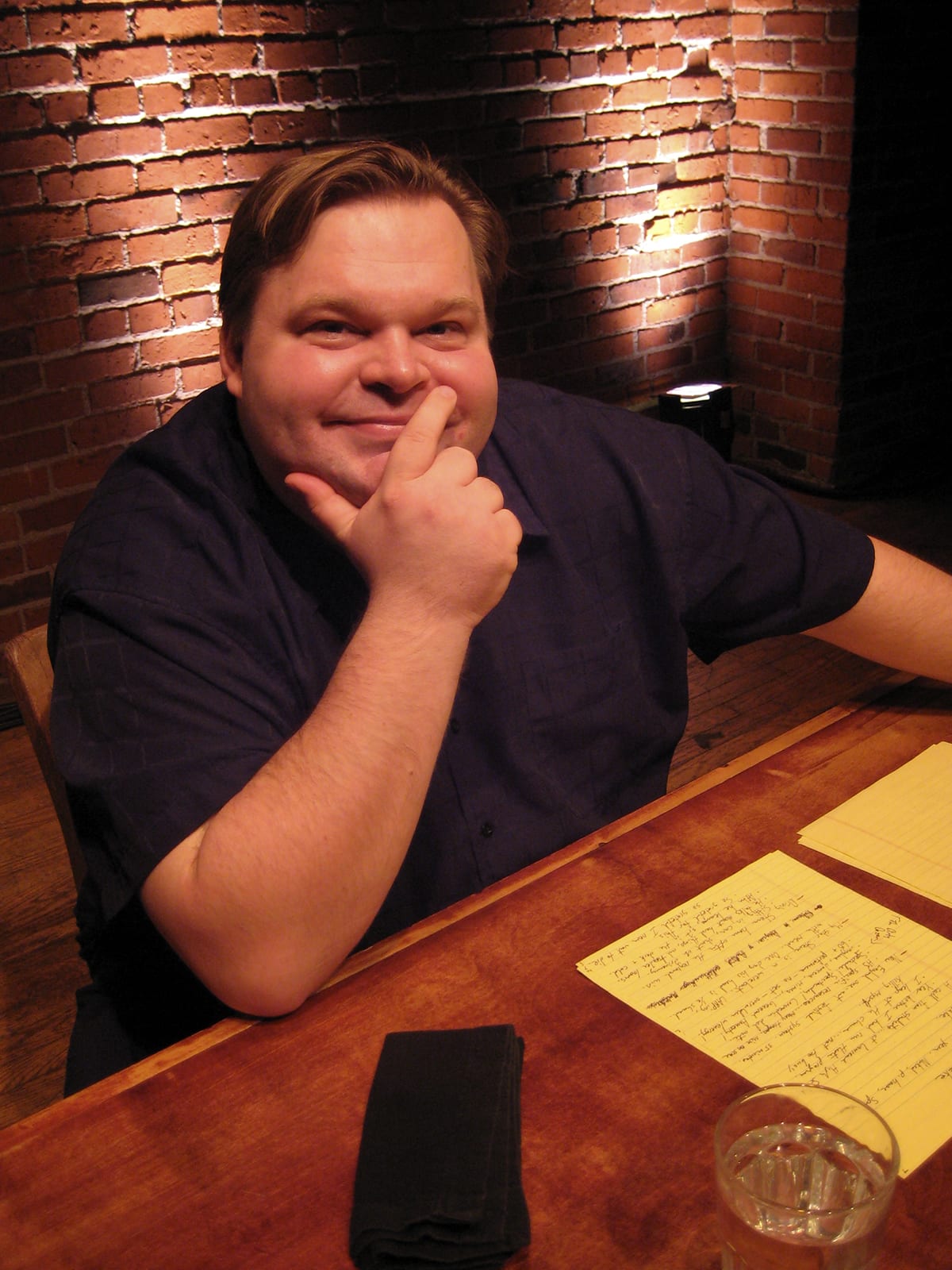“All you have to do is move your little finger, move your little finger, and you can change the world.” That line from Stephen Sondheim’s Assassins could well serve as an epigraph for Mike Daisey’s monologue, The Story of the Gun, now playing in a limited run at Woolly Mammoth. For Daisey, guns did not merely change America; they are foundational to what the United States always has been and remains today.

A conversation about guns is something Americans don’t really want to have, Daisey begins by saying, illustrating his point with an anecdote about his encounter with an NPR interviewer who, despite being freaked out by guns in his private life, was all blandness on the subject while on air. The monologue then segues into a brief history of firearms, which in turn leads to a key theme: without guns, the enslavement of African-Americans and the genocide of Native Americans could not have taken place. Without these two crimes, Daisey emphasizes, America as we know it could not have come into being.
Part of the effectiveness of Daisey’s art is his interweaving of the personal with the historical and political. He spends a good deal of time talking about his boyhood home in northern Maine and the hunting culture in which he grew up. He recalls students in his school being told, during hunting season, to be sure to stow their rifles in their lockers, rather than carrying them around the hallways. He gives the audience an extended, hilarious riff on his reaction to the rigors of deer hunting, the messy processing of the deer, and his distaste for venison.
His family home’s basement plays a major role in his story. This is not the finished basement of suburban homes but a dark cellar of the old school, a place of mystery -especially a locked chest – but also a place where he can pursue building models. It is also a metaphor: white America’s treatment of Native Americans and African-Americans is akin to the pillars of an entire house, which those of us living on the upper floors rarely see and seldom like to think about.
Daisey does something that African-American activists have long argued is essential: he is a white man explicitly talking to other white people (the audience was overwhelmingly white) about the racial assumptions that undergird American society and white people’s position in it. He doesn’t specifically make the point that some others have – that the right to bear arms, in an era of “stand your ground” laws and the readiness of prosecutors and grand juries to excuse police shootings of black men, is largely a white right – but he does ground that right in the need of white Americans to be able to fend off real or imagined threats from the racially-defined “other.”
Daisey has also created and performed a work titled “A People’s History,” based on the work of historian Howard Zinn. Daisey’s somewhat jaundiced take on American constitutional history (among other things, Daisey is no fan of Hamilton, either the historical figure or the hit show) shows a good deal of Zinn’s influence. There is much more to the Bill of Rights than the 2nd Amendment, in terms of its substance (e.g., due process, trial by jury, limitations on search and seizure), but one would not glean this from Daisey’s presentation any more than from NRA talking points.
In the latter part of the evening, Daisey delves into the history of the NRA, which until the 1980s was a very different, hobbyist-oriented, organization, far from the political powerhouse that it has since become. He makes a very insightful analysis of the fear-based strategy that fueled this transformation.
As far as I know, the NRA’s Wayne LaPierre was not in the opening night audience. Perhaps Woolly Mammoth should invite him.
For Daisey, the strongest arrow in the NRA’s quiver is the creation of an illusion that change is unthinkable. In the efforts of young people following the Parkland shooting and similar incidents, he finds a glimmer of hope that, despite guns being part of our country’s DNA, despite the overwhelming political and logistical difficulties involved, some movement could be possible.
A prolific and nationally-recognized monologist, making his seventh appearance at Woolly Mammoth, Daisey is far too skilled to turn the evening into a lecture. Speaking in a conversational tone, he combines information, humor, and personal recollection in a way that keeps an audience’s attention focused throughout the almost two hours of the show. He sits at a large table, sometimes mopping his face with a small cloth, which he sometimes uses subtly to emphasize something he is saying.
A lengthy monologue is in some ways analogous to a musical performance. Daisey most often speaks in a relatively high vocal register, which he can transform into a mellifluous baritone when impersonating an NPR announcer, or into something reminiscent of Garrison Keillor’s style when telling the well-crafted concluding anecdote about his father’s work with PTSD-afflicted veterans. Much of his presentation is staccato, with frequent self-interruptions, but he varies this with some effective legato passages. His monologue, at once thought-provoking and entertaining, is very much worth experiencing.
Running Time: One hour and 55 minutes, with no intermission.
The Story of the Gun plays through August 9 at the Woolly Mammoth Theatre Company, 641 D St., NW, Washington DC. For tickets, call 202-393-3939 or go online.




